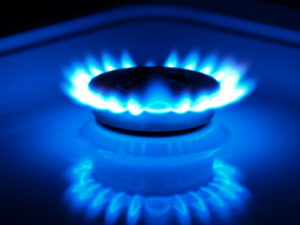 Natural gas was slightly up in early European trading on Wednesday but hovered near a recently hit minimum as a bearish mid-term weather outlook spelled low demand for the power source.
Natural gas was slightly up in early European trading on Wednesday but hovered near a recently hit minimum as a bearish mid-term weather outlook spelled low demand for the power source.
Natural gas for delivery in November traded 0.15% higher at $2.643 per million British thermal units at 08:29 GMT, shifting in a daily range of $2.644 – $2.631. The contract slid 0.1% on Tuesday to $2.639, a sixth straight daily decline.
According to NatGasWeather.com, natural gas demand in the US will be low compared to normal through September 29th, with a warm trend in effect for the southern, central and eastern US over the following seven days, while the Northwest will be near or cooler than normal.
A very comfortable weather pattern remains in effect over most of the US. High pressure will continue to dominate much of the country this week, resulting in widespread highs several degrees above normal. The North will warm up into the comfortable 70s and low 80s through the weekend, limiting the need for heating. Texas, the South and the Southwest will be the countrys hottest regions with highs in the 80s and 90s, but with relatively strong cooling demand confined mainly to those regions, national demand will remain subdued. Over the West, California will again become quite warm, while cooler weather systems track into the Northwest and northern Rockies.
The bearish pattern will remain in force next week as well, with the eastern, southern and central US warming up a bit more, but the lack of hot temperatures will keep cooling demand limited. A cooler trend will remain in effect over the Northwest and northern Rockies as Canadian weather systems track through, NatGasWeather.com said. It should be noted that the cold pool over Canada continues to strengthen but before it advances southward, the northern US will enjoy quite comfortable conditions.
Temperatures
According to AccuWeather.com, New York will peak at 80-82 degrees on September 24-25th, above the usual 72, before dropping into the low-mid 70s. Chicago will see temperatures max out in the mid 70s through September 29th, above the average 70-72, followed by a drop to the low 70s for the start of October.
Down South, highs in Texas City will be at 85-87 degrees through October 2nd, before easing to the upper 70s and low 80s. On the West Coast, readings in Los Angeles will max out at 91-92 degrees on September 24-26th, compared to the average 82, followed by a gradual drop to the low-mid 80s.
Inventories
The Energy Information Administration said last Thursday that US natural gas inventories rose by 73 billion cubic feet in the week ended September 11th, in line with analysts’ expectations and slightly below the five-year average build for the week of 75 bcf. This brought the total gas held in US storage hubs to 3.334 trillion cubic feet, slightly narrowing a surplus over the five-year average of 3.209 trillion to 3.9% from 4.1% a week earlier.
However, very comfortable weather across the US last week will lead to a triple-digit inventory number tomorrow, with initial estimates pointing to a stockpiles gain of about 105 bcf for the seven days ended September 18th, compared to the average gain of 83 bcf and the year-ago one of 96 bcf.
Moreover, pleasant conditions across most of the country this week will bring another hefty build to follow, although a bit lighter and near the average. Initial estimates for the October 1st report call for a gain of about 100 billion cubic feet during the seven days ended September 25th, compared to the five-year average gain of 94 bcf and below the year-ago increase of 110 bcf.
Pivot points
According to Binary Tribune’s daily analysis, November natural gas futures’ central pivot point stands at $2.579. In case the contract penetrates the first resistance level at $2.596 per million British thermal units, it will encounter next resistance at $2.615. If breached, upside movement may attempt to advance to $2.632 per mBtu.
If the energy source drops below its S1 level at $2.560 per mBtu, it will next see support at $2.543. In case the second key support zone is breached, the power-station fuel’s downward movement may extend to $2.524 per mBtu.





